Thousands of associations use directories to engage their members and the general public. For example, the American Psychological Association, a Fonteva client, relies on its private online membership directory to host more than 172,000 educator, scientist, and researcher profiles.
However, you don’t have to be a large association with a hundred thousand members to enjoy the advantages of a membership directory. Like association management systems, these major activity hubs are essential tools for every membership organization. This guide will help you create or optimize your membership directory, covering:
- What is a membership directory?
- What are the benefits of membership directories?
- What components should associations include in a membership directory?
- What software do associations need to build a membership directory?
- How can associations set up a membership directory?
- How can you promote your membership directory?
Before we dig into how to improve your membership directory, we’ll cover the basics of this key tool.

What is a membership directory?
Membership directories are databases that contain key information and profiles for each of an association’s members. Information such as names, contact information, photos, and more is compiled and stored in one centralized location.
The primary function of member directories is to:
- Keep track of association members.
- Organize them into searchable groups.
- Host membership information.
- Provide meaningful opportunities for members to connect with your organization and each other.
Think of member directories as a part-catalog, part-social media service for your members.
Types of Member Directories
There are two distinct types of directories:
- Public directories: Public directories are accessible to everyone, including non-members. This kind of directory can help associations build social proof, provide valuable resources to the public, and promote your community to prospective members.
- Private directories: Private directories are only available to members and require visitors to log in via a member portal. This type of directory is better for protecting members’ data and boosting the value of your membership by offering exclusive resources.
Your association doesn’t have to choose only one type of directory. Many organizations have both public-facing and member-only directories. For example, a state bar association may have a public directory and a private directory featuring more member data and direct messaging features for board-certified attorneys only.
Membership Directory Examples
Bar Association Directory
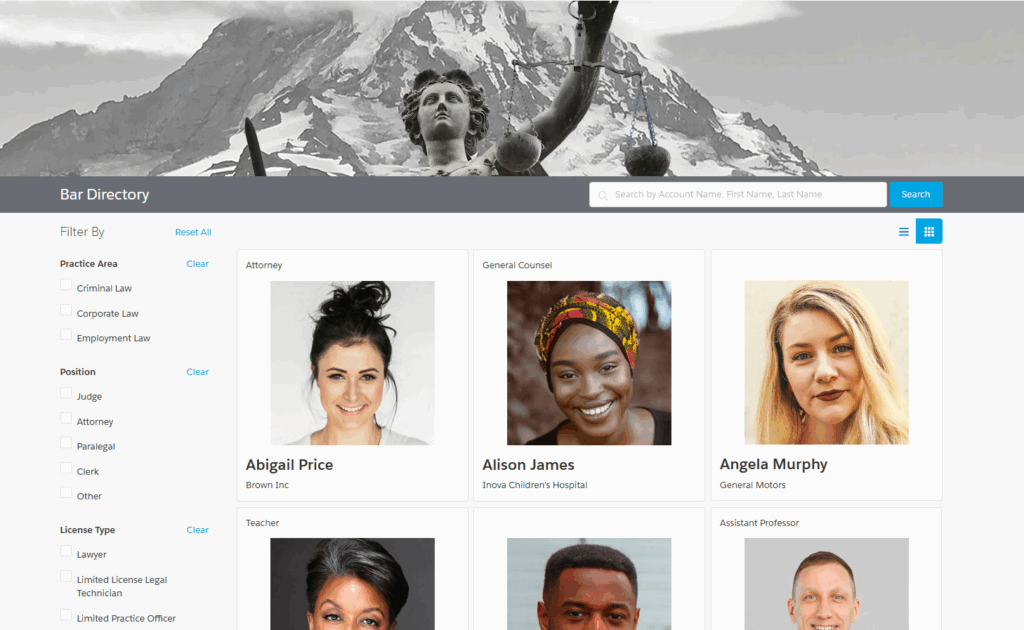
As we’ve mentioned, bar associations often have public directories. In the example above, the directory lists members of the association and includes search tools visitors can use to find specific members. For example, they can enter a member’s name in the search bar or filter the directory by practice area, position, and other criteria.
Internet Society Directory
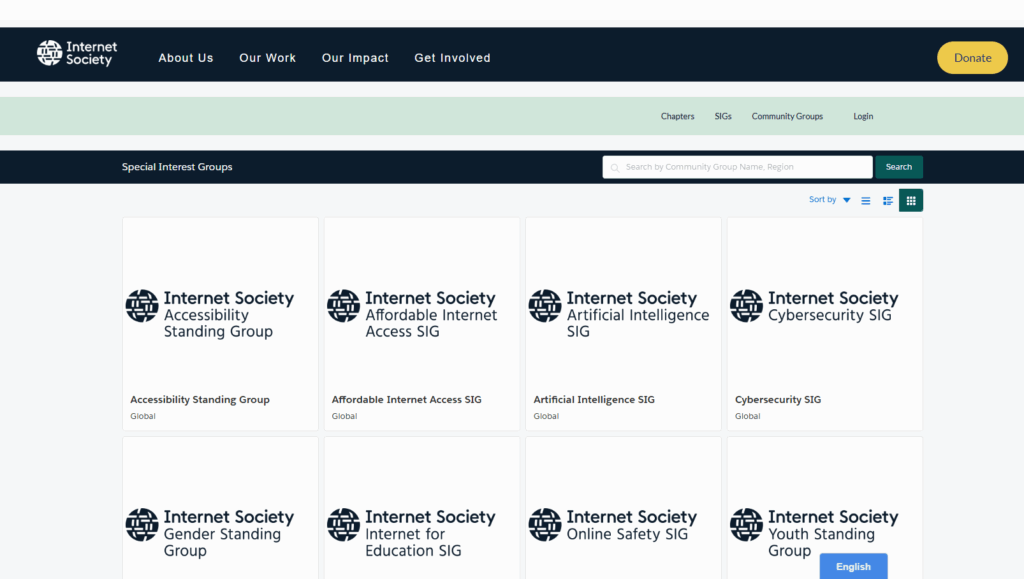
The Internet Society, a Fonteva client, is a membership organization whose goal is to shape the internet to be “open, globally connected, secure, and trustworthy.” They reinforce this with a vision for the future that the internet is for everyone.
The screenshot above shows one of the Internet Society’s member directories, with this one listing the organization’s various special interest groups. The Internet Society also has public-facing directories for individual members, organization members, and its board of trustees.
Content Directory
Some organizations create unique directories to meet members’ needs and better organize their resources and offerings. For example, here is a content directory or library used to organize key resources:
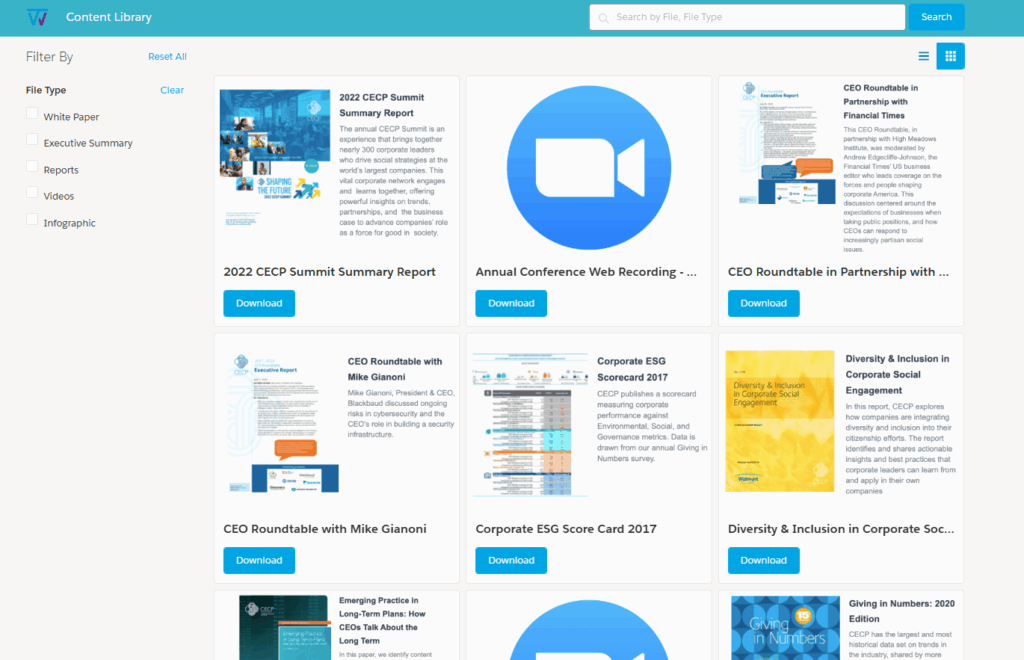
Similar to our bar association example, this directory offers filters and a search function so members can find the resources they need in seconds.
What are the benefits of membership directories?
Your membership directory should be more than just a storage unit for member data. Some of the fundamental ways a member directory can add value to your membership organization include:
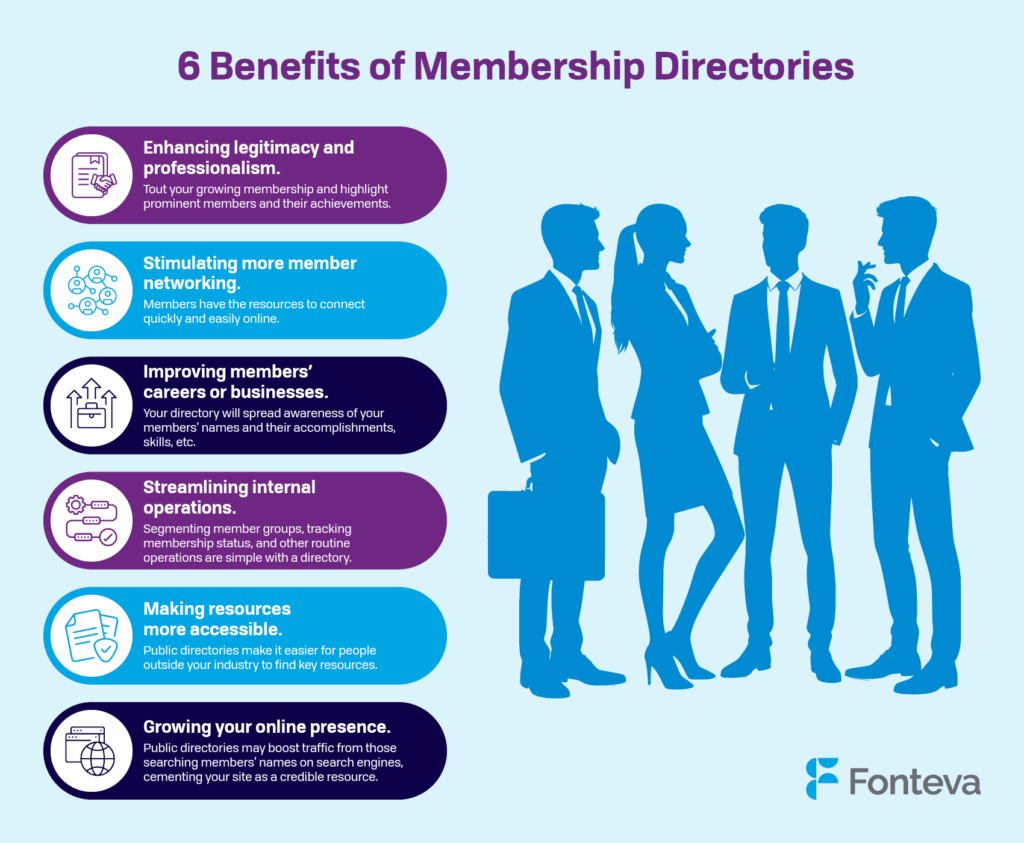
- Enhancing legitimacy and professionalism. An online directory gives you the chance to tout your growing list of members. With a public directory, you can highlight or feature prominent members and their achievements. This underscores your organization’s prestige and its ability to foster members’ professional development.
- Stimulating more member networking. Member directories give members the resources needed to network. This information in a directory encourages relationship-building far beyond what could be achieved during the span of a typical event, creating long-lasting connections that boost member engagement and retention.
- Improving members’ careers or businesses. Directories help spread the word about your members’ accomplishments, meaning more people in your industry will recognize their names. If they are business owners or freelancers, this recognition could result in an uptick in sales leads, thanks to your directory.
- Streamlining internal operations. Routine operations, such as segmenting member groups, tracking membership status, and sending targeted communications, are simpler and more efficient with the help of a membership directory.
- Making resources more accessible. Public directories make it easier for people outside your field to find specific resources, helping your association strengthen its reputation. This is particularly important for fields like medicine, law, finance, and tech that are difficult for a layperson to navigate.
- Growing your online presence. Public directories can boost traffic from individuals searching for your members on Google. An increase in traffic shows search engines that your site provides credible, useful information, boosting your rankings in search results pages. You’ll then start to rank for other related terms that potential members search for, attracting more prospects.
Increased member acquisition, engagement, and retention are three of the top goals of any membership organization, and a membership directory can help you make strides toward all three objectives.
What components should associations include in a membership directory?
Every association has its own unique needs, services, and goals. As such, each membership directory will be used in different ways, with some pieces of member data holding more weight than others. However, most associations will feature standard information and data fields for each member profile, like:
- Name
- Phone number(s)
- Email address(es)
- Photo
- Location
- Social media handle(s)
- Length of membership
This information gives curious searchers and fellow members a snapshot of your constituents, the ability to contact them for deeper engagements, and the opportunity to explore their online presence.
You might also consider including information that is specific to your industry:
- Professional associations: Employment details like where the member is employed, their current role, past work experience, and membership tier (if applicable)
- Trade associations: The organization or group’s sector or sub-industry categorization, industry certifications or achievements, advocacy and involvement with the association, and member participation and leadership roles
- Healthcare associations: Medical certifications and licenses, specialty, hospital affiliation, and research or publications
- Chambers of commerce: Business details such as address, logo, and industry or specialization
When looking for your own membership directory solution, keep an eye out for these fundamental features. Regardless of the services your membership program offers, these critical components will help your association achieve greater member acquisition, engagement, and retention. Additionally, seek out feedback via surveys, focus groups, or listening tours, and implement any useful changes your members suggest.

What software do associations need to build a membership directory?
Fonteva offers robust membership software to store member data, facilitate communications, help plan events, and more. With Fonteva’s AMS, your association can enhance its online membership directory using features like:
- Comprehensive member profiles and membership levels. Customizable widgets encourage members to create comprehensive online profiles in your directory. Additionally, implementing membership levels and including these levels on member profiles will promote higher tiers.
- Member communities. Take your membership directory’s networking capabilities to the next level with dedicated member communities. These special interest groups and committees allow members to organize themselves by classifiers and create group-wide events, activities, and discussions around those interests.
- Intuitive dashboards. Customizable dashboards increase productivity and task management across your organization’s departments. Each team and individual staff member can track their goals, projects, membership statistics, and financial data.
- Event management system. Fonteva’s event management system integrates directly with your membership management system to create a personalized and engaging event experience for your members.
- Revenue accounting. Fonteva’s membership software integrates with your membership profiles to easily track fees, card transactions and refunds, and registrations. This enables you to simply, quickly, and securely complete your financial reporting.
- Reporting and analytics. While many membership solutions have basic reporting features, Fonteva’s association management system provides advanced options. With data segmentation and customization for different departments, advanced file exporting options, and reporting for any metric in your member database, your association can create informed data-driven strategies to optimize your operations.
To learn more about association membership software and how the Fonteva solution can streamline your association’s success, check out our essential guide to membership software.
How can associations set up a member directory?
When you’re ready to get your membership directory up and running, follow these seven steps to keep the process running smoothly:
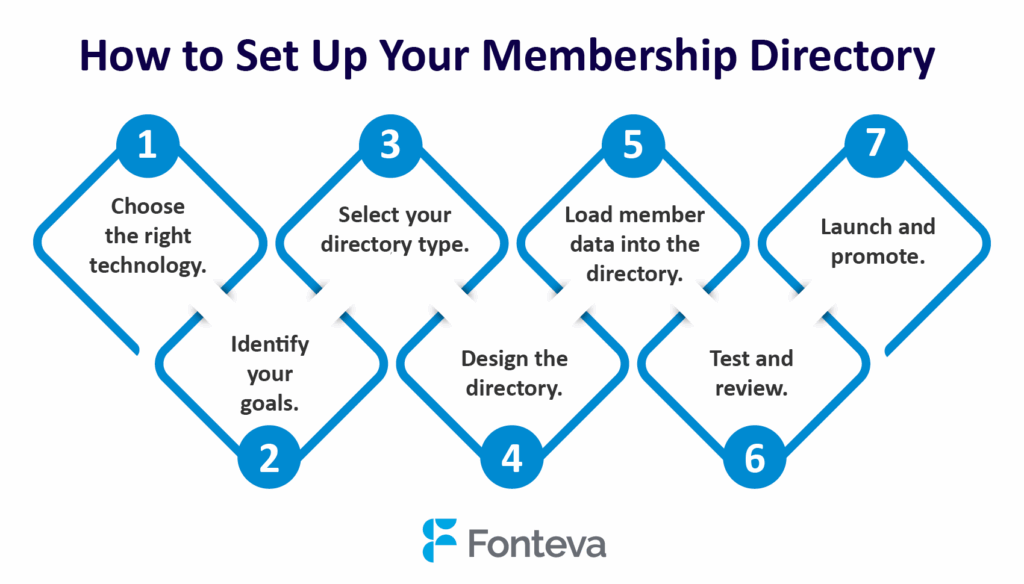
- Choose the right technology. You’ll need robust association management software (AMS) with membership directory tools to get started. Ideally, your AMS should integrate with your database to keep data unified in one platform. For example, if you use the Salesforce CRM, you’ll want to choose a Salesforce-native AMS like Fonteva.
- Identify your goals. What do you want the directory to accomplish? For example, do you want to promote networking among members, boost engagement, or build your association’s credibility and reputation?
- Select your directory type. Based on your goals, choose whether you’ll set up a public or private directory or both.
- Design the directory. Next, work with a developer to design the directory structure. Implement categories, filters, and search functionality to make it easy for users to find specific members. Tailor each member profile to your association with custom data fields.
- Load member data into the directory. Now, it’s time to add members’ data to the directory. Allow members to edit certain data fields, like their preferred name, to add a personal touch.
- Test and review. In a testing environment, try the directory out for yourself. Make sure it is responsive and confirm that all of the built-in functionalities work. Consider releasing the directory to a small group of members and ask them to report any suggestions or issues.
- Launch and promote. Once you’ve worked through any last-minute kinks, you can release the directory! Announce the launch and promote the benefits to motivate members to use it.
These steps may look different for your association depending on its size, whether you already have a directory, your goals, and more. If you need help setting up or configuring your directory, reach out to an AMS provider like Fonteva for assistance.

Member Directory Templates
Some smaller organizations may use a spreadsheet to organize their membership directory. These directories look something like this:

In contrast, using a dedicated AMS like Fonteva allows associations to build out a polished directory. This adds a professional touch and makes it easy for users to navigate your member list, encouraging them to engage with the directory. Here’s what a refined membership directory might look like:

How can you promote your membership directory?
After launching the directory, it’s time to share it with your members. After all, you need them to set up their profiles and interact with the directory to start reaping the benefits.
Promote your directory by:
- Getting leadership involved. Encourage association leaders and board members to lead by example. Have them set up their profiles and share them publicly. Ask leadership to promote the directory during meetings, add a link to their profile in their email signatures or LinkedIn profiles, and frequently interact via the directory.
- Sharing it on social media. On average, people spent 2 hours and 21 minutes on social media each day in 2025. Take advantage of your members’ daily scrolling by promoting the directory on your social media pages. Create dedicated posts when the directory launches, post reminders for members to update their profiles, and include a link to the directory in your account bio.
- Encouraging members to join during events and meetings. Consider mentioning the directory at the start and finish of each of your meetings. At conferences, you might create signage with scannable QR codes linking to the directory. Stress the positive impacts of engaging with the directory.
Promote your membership directory in tandem with an interactive member community engagement platform. This way, members can search for their peers in the directory and connect via the engagement platform. Plus, due to the social element of the platform, they’ll be more motivated to update their profiles and post often.
Additional Resources
If you want to keep your members engaged and involved in your association, membership directories are an essential tool you may be overlooking. These versatile databases don’t just benefit your staff as you catalog and track member data—they also give your members the power to form long-lasting relationships within your organization.
For information and tips on other critical services for your membership program, check out these other top resources:
- AMS vs. CRM: Choosing the Best Solution for Your Association. Don’t understand the difference between these two essential types of software? We explore the fundamentals and functionality in this comprehensive guide.
- A Guide to Transforming Your Association With an AMS. Membership directories aren’t the only feature hosted by a strong association management system. Learn about the advantages, key features, and functionalities to look for in AMS software.
- Salesforce for Associations: A Comprehensive Guide. Want to know why it’s so beneficial to choose association software that’s Salesforce-native? Explore all the reasons in this guide.

